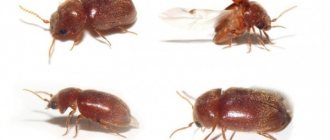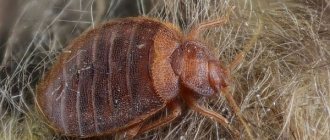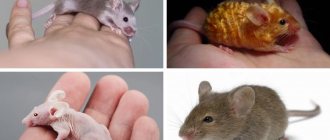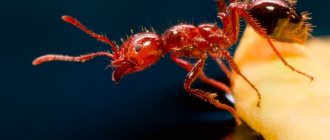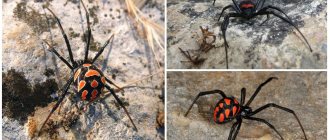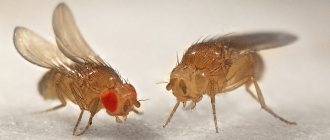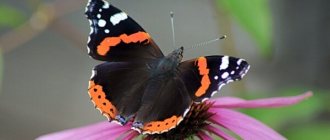- Wild animals
- >>
- Insects
Almost everyone who rested on the shore of a lake or river came across a swimming beetle . This dexterous insect is a merciless predator and attacks many river creatures. These beetles do not show aggression towards humans, but if they feel threatened, they can bite. The bite of a diving beetle is not life-threatening, but quite painful.
Origin of the species and description
Photo: Swimming beetle
The swimming beetle is a representative of the family of aquatic insects from the large order Coleoptera. In total, there are about 4,000 species of these creatures, 300 of them are found in Russia. The beetle's Latin name, Dytiscus, translates to "diving." The oldest fossil of this insect was found in Kazakhstan and dates back to the Jurassic period.
Video: Swimming beetle
From the whole variety of swimming beetles, several of the most interesting species to study can be identified:
- the fringed beetle is the most common and largest. Its body is painted black with a characteristic orange border, its legs are also very bright;
- a wide swimming beetle - its main feature is that the larvae are larger in size than adults and can grow up to 6 cm in length;
- The color of the wide diving beetles is inconspicuous - from dark brown to black with a greenish tint. In some countries it is listed in the Red Book;
- striper or phalarope - small in size, quite common in Russia;
- The diving beetle is the smallest representative of the diving beetles. There is a swamp and flat diving. The body of the first is covered with stiff hairs.
Interesting fact: Swimming beetle larvae digest food outside their bodies using a special poisonous liquid that is injected into the victim. The larvae suck out the nutrients from it in a completely digested form.
Body parts
The swimmer's body consists of three sections. These are the head, chest and abdomen. All sections are motionlessly articulated with each other. All this, combined with the oval shape of the body, makes the beetle an excellent swimmer. The swimmer's head is retracted into the chest, the pectoral segments are fused, smoothly turning into the abdomen.
The head contains mouthparts and sensory organs. The swimming beetle is an active predator. Due to the fact that the mouthparts are directed forward, the insect can grab prey when chasing. The upper lip has the appearance of a transverse plate. Behind it is a pair of remarkably developed jaws that grab and crush the prey. Their ends are pushed forward, like pointed teeth. Behind the upper jaws there is a pair of lower jaws with palps; they are limited on the sides by the oral opening. Below the mouth is the lower lip. Short palps on the jaw and lip are organs of taste and touch.
With the help of their mouthparts, swimmers and some other insects capture, chew and crush prey. That's why they are called gnawing ones.
There are compound eyes on the sides of the head. Each one consists of 9 thousand simple eyes. The fringed swimming beetle, whose body shape is comparable in streamlining and strength to that of a submarine, distinguishes the outlines and size of moving objects. In front of the eyes, the insect has a pair of antennae, which belong to the organs of touch, smell and taste.
The legs and wings are located on the chest segments. Only the first segment can be seen on the back of the beetle. Its upper part - the so-called dorsal shield - is similar in shape to a trapezoid. The remaining segments of the thorax, as well as the abdomen, are covered with hard elytra (modified fore wings), which are protected from above by delicate hind wings. The remaining parts of the swimming beetle's body are hidden behind durable covers.
Stiff fore wings are characteristic of all beetles, which is why they are called Coleoptera. First, the swimmer raises its elytra, moving it slightly to the sides, then spreads its folded wings and only after that takes off. In flight, elytra and wings are as important for an insect as the supporting planes and propeller are for an airplane. On land, the swimming beetle moves rather slowly, while waddling from side to side, pushing off with its hind legs and moving its front legs.
Appearance and features
Photo: What a swimming beetle looks like
The size of adult swimming beetles and color may vary depending on the species. The length of the body of the smallest specimens does not exceed 3-4 mm, large specimens reach 4.5-5.5 cm. The body of the adult is oval and flat, which is ideal for movement under water. The hind limbs have well-developed muscles. The flattened tibiae and hind legs are covered with elastic hairs. The method of movement in the water column itself is similar to rowing with oars. The front and middle legs of the beetle are much shorter than the hind legs.
The swimmer's body consists of three parts: head, chest, and abdomen. The head is fixed on the chest, motionless and extends onto the abdomen without clear boundaries. On the sides of the wide and flat head there are quite large eyes and each of them consists of 9000 ordinary ocelli, thanks to which the insect is able to clearly distinguish between moving and static objects. The beetle's abdomen consists of eight segments, which are protected by hard elytra.
The powerful jaw is located behind the upper lip. The mouthparts are of the gnawing type, the jaw is designed for grasping and rapid chewing. The organ of smell is a segmented long mustache of 11 segments. Swimming bells breathe using special holes located on their belly. A complex system of tracheae extends from the spiracles, and there are air sacs in the chest. By opening and contracting its abdomen, the swimmer creates air movement in the trachea.
The body color of the diving beetle larvae can be brown, yellow, gray, and sometimes the body is covered with a pattern. Young beetles are very similar to scorpions. Their head is flattened, the chest consists of three segments, and the belly consists of 8 segments. There is no mouth opening and food enters through the jaw. The wide body gradually tapers towards the posterior end, on which there are cerci, spines and setae.
Reproduction and stages of development of beetles
Males of almost all species of beetles are aggressive towards each other and fight among themselves for places rich in food.
And during the mating season, the beetles organize real battles for the right to possess the female. The mating process depends on the genus and species, as well as the lifestyle of the beetles.
Coleoptera belong to higher insects, therefore their life cycle occurs with complete transformation, which implies the sequential passage of 4 stages in development: eggs, larvae, pupae and adults.
In some species, as an exception, this process may have a greater number of phases due to an increase in the number of larval transformations.
Egg
The female beetle lays fertilized eggs in secluded places, which can be used as fallen leaves, nests of insects of other species, stone ruins, deep cracks in the bark of a tree, tunnel systems specially dug in the ground, leaves rolled into a tube, etc. Oval or rounded-oblong eggs of beetles are colored white, gray, greenish, yellowish, grayish-yellow and covered with a thin chitinous or leathery shell. Their size and number depend on the species of the insect. The average duration of the egg stage ranges from 2 to 3 weeks.
Larva
The appearance and color of Coleoptera larvae are very diverse. The larvae of beetles that live in the soil layer or under the bark of a tree are colored yellowish, whitish or pinkish, while the larvae that feed on the surface have brown, black, dirty green outer coats, often with red, yellow or brown spots. The beetle larva looks like this: the body can be worm-like, fleshy, slightly flattened and elongated, with or without well-developed legs, covered with chitinous protective coverings or without them. However, all beetle larvae have a head protected by hard coverings and a gnawing type mouthparts. During the growth process, the beetle larva goes through several molts.
The duration of the stage depends on the species, the type of its nutrition and climatic conditions and can take from several months to 6 years. Some families are characterized by the possibility of puberty and reproduction already at the larval stage, and in representatives of some species, the development of a fertilized egg takes place in the mother’s oviduct until the appearance of mature larvae.
Doll
Almost all Coleoptera, regardless of their habitat, spend the period of transformation into an adult at a depth of up to 20 cm below the soil surface. Although some species of beetles pupate at the sites where the larvae develop. Before the process begins, the larvae arrange a kind of cradle for themselves, in which they spend the entire transformation period, which lasts up to three weeks. During this time, an adult insect grows from the pupated larva.
Imago (adult)
An adult beetle, depending on the species, can live from several months to several years. Many species of beetles die after the mating season and laying eggs, although some adults calmly endure several winterings and re-participate in the reproduction process.
Where does the swimming beetle live?
Photo: Swimming beetle in water
Swimming beetles are widespread throughout the world, they are found in Europe, Asia, over a vast territory from Sakhalin to the Atlantic Ocean, and northern Africa. Swimming beetles prefer fresh water bodies where there is no current or it is very weak. They are found in abundance in ponds with stagnant, blooming water, and swamps.
The beetle spends most of its time underwater, but can also fly—if necessary, insects travel tens of kilometers. Most often, beetles are forced to make such flights by the drying out of a reservoir or a small amount of food. Sometimes they can even fly into private pools and ponds where ornamental and other fish are bred.
They are capable of completely destroying fry and all other living creatures in an artificial reservoir. It can be quite difficult to drive them away from their favorite place. In some cases, only complete disinfection of the bottom of the reservoir and re-breeding its inhabitants can help.
Interesting fact: The swimming beetle takes root well even in aquariums. Meat can be used as food, which is pre-cut into small pieces. The aquarium must be covered with a lid, as insects can easily fly away. The main condition is that beetles cannot be placed in the same container with any fish.
Reproduction of diving beetles
Sexual differences in beetles are expressed in the size and structure of the legs. The female is larger, and the male has plates on the first three segments of his legs, with the help of which he holds the female during the mating period. For diving beetles it occurs in the spring. After fertilization, the female lays eggs in the bottom silt or plant tissue. The larvae hatch after 2 weeks. Outwardly, they look like caterpillars with powerful mandibles and an upturned tail.
The larva is very voracious, and in large quantities destroys eggs, fry and larvae of other insects - mosquitoes, dragonflies, caddis flies. The digestive system is unique - the predator plunges its jaws into the body of the victim and injects gastric juice, which paralyzes the prey and quickly softens the tissues. The insect then sucks up the semi-digested contents.
Before becoming an adult, the larva goes through the pupal stage. At the beginning of autumn, she gets out of the reservoir and builds a cradle on the shore from lumps of soil and plant remains, in which pupation occurs. This process lasts about a month. A few hours after the pupa emerges from the cradle, the soft covers darken and become harder.
The swimming beetle is easy to keep in a home aquarium. Meat or fish are quite suitable as food. It is better to keep decorative fish separately, since the beetle will sooner or later try them anyway.
What does the swimming beetle eat?
Photo: Water beetle
Swimming beetles are fierce predators. Adults rarely feed on carrion; they are more attracted to live prey that will resist.
The main diet of swimming beetles:
- insects and their larvae, snails, tadpoles, fish fry;
- newts, frogs, small fish.
Beetles are not interested in algae; they are completely carnivorous. If there are a lot of these insects in a reservoir, then in a short period of time they are able to destroy all the fish, attacking their fry in large groups. The beetles sense even a small drop of blood at a distance of tens of meters and immediately rush to this place. They look for food mainly only in the water column and rarely go to land.
Interesting fact: Swimming beetles eat a lot. Sometimes they overeat so much that they are not even able to rise to the surface of the reservoir. In order to reduce body weight and float to the surface, the swimmer regurgitates everything recently eaten, completely empties the intestines and a special crop. When there are algae nearby, it slowly rises to the surface of the reservoir along them.
The larvae of diving beetles differ little from adult individuals in their predatory instincts. They are capable of attacking quite large fish; they bite very painfully if they fall into the hands of a person. Their jaws are incredibly sharp, similar to sabers.
Lifestyle
It is not so easy to carefully examine a swimming beetle in the water; it quickly floats to the surface, hangs for a while, then quickly flaps its flippers and disappears into the water column. Its main occupation is hunting, and the diving beetle hunts all inhabitants of the reservoir, even those that are significantly larger in size. The swimming beetle holds small prey with its front paws and bites off piece by piece. Larger prey takes longer, and sometimes fellow creatures come to the rescue.
A large population of swimming beetles can cause enormous damage to fish ponds. The beetles and their larvae eat many of the fry.
The small black beetle is considered one of the best swimmers among insects, but it cannot rise from the water into the air. To take off, the swimmer has to climb onto land.
Features of character and lifestyle
Photo: Large swimming beetle
The body of swimmers is lighter than water and, if they have not overfed, they rise to the surface very easily. It takes a lot of effort to get down. At the bottom of the reservoir, on the surface of the algae, the beetles are held with the help of special hooks on the forelimbs.
These insects actively hunt at night. If the living conditions in the reservoir do not satisfy them, then they go in search of another home and are able to travel long distances. Before starting the journey, the adult completely empties its intestines and then fills its air sacs. Only by removing as much as possible everything unnecessary and reducing its weight does the swimmer take off. During a night flight, many beetles crash against the glossy surfaces of roofs and walls of buildings, as they mistake them for a body of water.
The majority of swimming beetles spend the winter in the soil or hide in cracks in the bark of trees. Some insects overwinter in the egg phase, others as larvae. Some adults remain in the water and actively swim until it freezes. When ice sets in, insects burrow into the silt until spring.
Interesting fact: To replenish oxygen supplies, the beetle floats to the surface and sticks its abdomen above the water. An adult beetle should carry out this procedure at least once every 15 minutes. Air is used by beetles not only for breathing, but also for controlling ascent and descent.
Rules for aquarists
Tips for beginner aquarists:
- Watch the behavior and appearance of the fish. The color should be rich, the eyes should not be cloudy. If you have any suspicions, contact experienced aquarists, describing in detail the problem, the parameters of the aquarium and the features of keeping the fish.
- Keep in mind that even in a healthy aquarium, in addition to plants and fish, other small inhabitants appear (for example, ciliates or small insects).
- Maintain your aquarium on time. Incomplete care of the aquarium stimulates fish poisoning and decreased immunity.
- When introducing new fish, study information about them. They may be incompatible in terms of required water parameters or temperament.
- If the fish dies, immediately remove the corpse from the water. Determine the cause of death by external examination.
- If the fish shows signs of illness, place it in a separate container.
- Do not knock on the glass or interfere with the life of the inhabitants of your home aquarium unless necessary.
- When you start breeding fish, learn what you can’t do without for successful spawning, and how many males a female is placed with.
- To avoid damaging the walls of the aquarium, use a non-metallic scraper.
- If stones are collected from the street, test them for the presence of heavy metal ions with acetic or citric acid. Stones containing undesirable elements will react when they come into contact with acid. Boil the soil thoroughly to avoid introducing parasites into the aquarium. Driftwood collected from nature must also be thoroughly boiled.
- To prevent fish from jumping out of the aquarium, cover the container with a lid.
- Proper use of an aquarium siphon, connecting equipment or feeding fish is impossible without training and preparation, it will take a little patience before the aquarium hobby becomes productive.
Science points to fish's ability to sense and recognize faces. Aquatic pets have their own characteristics and range of sensations. Don’t be lazy to create comfort in the world of underwater inhabitants, because fish are sensitive and intelligent creatures.
Previous Aquarium Daily feeding using feeders for aquarium fish Next Aquarium Is it enough for the aquarium water to stand for just a few hours?
Social structure and reproduction
Photo: Swimming beetle in a pond
Immediately after hibernation, swimmers begin to reproduce. Males do not court females; they themselves choose a suitable individual and simply attack it, grabbing it with their front paws, and immediately begin mating. The entire process takes place underwater. At one time, a female can mate with several males, and some of them die from suffocation due to the lack of opportunity to replenish air supplies once again. Males at this time are above the surface of the water.
After the mating process is complete, the females lay their eggs inside the algae, first piercing the tissue with the ovipositor. In one season, the female lays 1-1.5 thousand eggs. After 10-12 days the larvae appear. Depending on the weather, the process may take up to a month.
Swimming beetle larvae grow very quickly. They are excellent swimmers, capable of breathing atmospheric air, like adults, but they expose the rear end of their body for this. Larvae, like adult beetles, are very voracious and merciless predators. Their first food: fish eggs, larvae of dragonflies, caddis flies, and mosquitoes.
With the onset of autumn, the larvae of diving beetles leave water bodies and crawl to the shore, where they build themselves cradles from soil and plants. In such a shelter their pupation occurs. After a month, adults appear. At first they are white and soft like dolls, but within a few hours their surface hardens and darkens.
Reproduction
With the arrival of spring, when it is warm outside and the water temperature rises noticeably, swimming beetles begin to mate. The process is so serious that many females do not survive. In addition to the fact that males, especially with females, do not stand on ceremony, they attack them and hold them under water for a long time, which leads to the fact that females do not have the opportunity to rise to the surface and breathe air, there may be several males, and this is certain death. If a female mates with one male, then she may not be in danger of dying from lack of oxygen.
Those females for whom the mating process was successful begin to lay eggs after some time. At one time, she can lay up to a hundred eggs, and over the course of a season this number grows into the thousands. The female securely attaches her future offspring to the stems of underwater plants, due to a special secretion that she secretes. After some time, rather voracious larvae emerge from the eggs, which immediately begin to hunt living creatures in the water. At the same time, in the first stages it copes with very tiny living creatures, and after a while it already catches small fish.
How does the larva develop?
The larva of the swimming beetle has quite powerful jaws, like the most adult beetle, which allows it to cope with any prey. She literally launches her jaws into the body of her victim and at the same time secretes gastric juice, which leads to the softening of the victim's flesh. After the insides of the victim become liquid, the larva absorbs nutritional components using two channels located on either side of the jaw.
After two molts, the insect moves to land, where in a humid environment, usually in the ground, the larva pupates and remains in this state for up to a month, depending on weather conditions. After this time, an adult swimming beetle emerges from the pupa and remains in its hiding place for another week, waiting for its body to get stronger. After this, the adult swimming beetle leaves its shelter and heads towards the reservoir, where it will live for about one year.
Natural enemies of the swimming beetle
Photo: What a swimming beetle looks like
The adult diving beetle lives on average 1-2 years. During their rather short life, these creatures are capable of causing great damage to the ecosystem of a reservoir and fish farms. If it were not for the natural enemies of the predatory beetle, it would be very difficult to control its numbers.
The diving beetle can be hunted by:
- large fish species;
- some birds, including all seagulls;
- mammals that inhabit bodies of water.
In case of danger, swimmers are capable of quickly producing a special white secretion with a pungent odor, which scares away some predators who decide to feast on them. For this reason, there are not many people who want to attack her.
The parasitic wasp is a natural enemy of predatory beetle larvae. Female ichneumon wasps purposefully search for swimming beetle larvae by their special smell and lay their eggs inside their bodies, which then feed and pupate right inside the larvae. As they grow, the young diving beetles die.
Interesting fact: The predatory beetle, despite its small size, is able to cope with prey that is three times larger than the predator itself. If one individual is unable to control the prey, then other beetles rush to its aid - like piranhas, they only need to smell blood in the water column.
Swimming beetle bite
The swimmers bite painfully. At the moment of the bite, the victim feels a sharp pain, as if the skin were pierced with a wide needle. The feeling of pain does not disappear even after contact with the insect. After some time, swelling and redness are observed in the affected area of the skin. A lump may also form that does not resolve within several weeks.
A beetle bite will not pose any health hazard. But if the affected area is not treated with a disinfectant, the wound may become infected and fester.
Internal structure of the cockchafer
The type of mouthparts is gnawing.
Digestive system
The adult cockchafer feeds on the leaves of trees and shrubs. With the pointed ends of the upper jaws, it bites off small pieces from the leaf, and with the jagged edges of the lower jaws it crushes them.
Swallowed food enters the esophagus and then the stomach. The stomach has chitinous teeth with which food is ground. Its final digestion and absorption of nutrients occurs in the intestines. Remains of food are eliminated through the anus.
Circulatory system
The circulatory system, like that of all arthropods, is not closed. Blood directly washes the internal organs and tissues while in the body cavity, transferring nutrients to them and carrying harmful waste products to the excretory organs. It does not participate in the transfer of oxygen and carbon dioxide, that is, in respiration. Its movement is ensured by the work of the heart - a longitudinal muscular tube located in the dorsal part above the intestines.
The heart, pulsating rhythmically, drives blood to the head of the body. Backflow is prevented by the heart valves. When the heart expands, blood enters it from the back of the body through its side openings, which are equipped with valves that prevent blood from flowing back. In the body cavity, unlike the heart, blood flows from the front end to the back, and then, entering the heart as a result of its pulsation, it is again directed to the head.
Respiratory system
The respiratory system is a dense network of branched internal tubes - tracheae, through which air, entering through the external spiracles, is delivered directly to all internal organs and tissues.
If you lift the elytra of the beetle and spread the thin translucent wings, then along the edge of the dorsal side of the abdomen, small holes are visible on each segment - spiracles.
Excretory system
The excretory system is a bundle of thin tubes, the so-called Malpighian vessels, located in the body cavity. They are closed at the tops, and open at the bases into the intestines.
Metabolic products are filtered out by the entire surface of the Malpighian vessels, and then inside the vessels they turn into crystals. Then they enter the intestinal cavity and, together with undigested food debris, are excreted from the body. Some harmful substances, especially poisons, accumulate and are isolated in the fat body.
Nervous system
The nervous system, like that of all arthropods, consists of a peripharyngeal ring and a ventral nerve cord.
In the head, as a result of the fusion of clusters of nerve cells, the brain is formed.
Reproductive system
The female reproductive system consists of two ovaries, in which eggs are formed. The ovaries, passing into tubular oviducts, merge at their bases into a single unpaired oviduct, through which mature eggs are released. In the female reproductive system there is a seminal receptacle - a reservoir into which male sperm enter. Mature eggs can be fertilized by these sperm.
The reproductive organs of the male are two testes that pass into the vas deferens, which unite into an unpaired ejaculatory duct, which serves to excrete sperm.
Features and habitat
The most famous of the carnivorous beetles is the fringed diving beetle . Actually, the life cycle of the diving beetle is the same as that of many other Coleoptera - first, females lay eggs, from which larvae later emerge.
The larva of the swimming beetle is terribly voracious, and its size often exceeds the adult individual, which in itself is unusual. If you look at a photo of a diving beetle or see it in its natural habitat, for example, in a pond, you can easily notice that the diving beetle’s body consists of a head, thoracic region and abdomen.
One part of the body smoothly passes into another, all parts are motionlessly fused, and the whole body has an oval shape, which is most convenient for swimming. The insect's sensory organs are located on the head. There are also oral organs that are directed forward.
It was nature that was so concerned about making it more convenient for the terrible predator to catch its prey. The developed jaws of the diving beetle grab prey and easily crush it. But the small palps, which are located on the jaw, recognize the taste of prey and are an organ of touch.
By the way, the diving beetle chews its prey, so it is classified as a gnawing insect. On the head there are eyes, which are called compound eyes due to the fact that they consist of many facets (9000 small simple eyes). The organ of touch is the antennae, which are located at the top of the head.
All other parts of the body are hidden under hard wings and therefore reliably hidden. The swimmer is an unusual insect. It’s not often that you see a living creature that can fly superbly, move on land and stay in water for a long time. Swimmers not only stay in the water for a long time, they live there.
But, despite this, they cannot boast of gills. It is very interesting to watch how swimming beetles breathe . They breathe the same air as all land dwellers. This beetle has special spiracles on the sides of the abdomen, the beetle exposes the rear end of the abdomen from the water, takes in air, and the spiracles do their further work.
The photo shows the larva of a diving beetle
This amazing insect lives in stagnant water, for example, in ponds, in lakes, that is, where there is no strong water movement, but the food supply is good, because the diving beetle is a serious predator. If you create conditions for this representative of insects in a home aquarium, then the diving beetle will perfectly get used to it there too. The owner will only have to observe the curious moments of this aquatic resident.
Nutrition
Swimming beetles are predatory insects. They, like river inhabitants such as the otter or beaver, can pose a danger to entire populations of fish. Small fish, insects, frog tadpoles, mosquito larvae, aquatic worms, as well as dead toads are what the swimming beetle feeds on.
The rather sharp and wide mandibles of beetles are designed to destroy prey, the size of which may seem many times larger than their own. The swimmer is not afraid to attack even a large inhabitant of the reservoir. When attacked, the victim tries to throw off the predator with a sharp movement. But the wound inflicted by the beetle’s mouth begins to bleed, as a result of which the released droplets of blood become a signal for the attack of other swimming beetles.
On a note ! If you keep the beetle at home, you can offer your pet fish or meat as food. It is not recommended to place the diving beetle in the same aquarium with ornamental fish; the possibility of an attack on them by a predator still cannot be ruled out.
Rules for handling a pet
Swimming beetles - adults and larvae are real predators with strong and sharp mandibles. We must not forget about this when dealing with beetles. It is better not to pick up insects with your bare hands; if they sense danger, they will try to bite or release a special protective secretion. There are glands on the sides of the swimmers' bodies that produce a caustic, milky-white liquid. It is poisonous and smells unpleasant. There is no danger to human health; just wash your hands with soap. When changing the water in the aquarium, the beetle is removed with a net.
The bite of the larvae is especially unpleasant; you should not catch or handle them. The offspring are much more aggressive than the adults.
Observations
Swimming beetles are active insects; they explore the bottom of the aquarium with interest. The need to surface to replenish their air supply makes their behavior active. The beetles quickly get used to humans and swim when approaching the aquarium. Their lifespan is 2-3 years.
This insect is carnivorous and belongs to the Coleoptera family. The swimming beetle quickly adapts to natural conditions, so it is not problematic to find it in the waters of Eurasia. In addition, it inhabits the waters of North America and is also found in Antarctic areas.
For its life activity, the beetle chooses bodies of water with stagnant water, which are rich in flora and fauna. The diet of the diving beetle includes objects of animal origin. He can even live in an aquarium if he is provided with all the necessary conditions and enough food.



